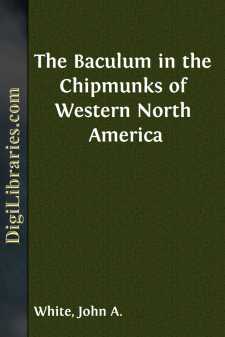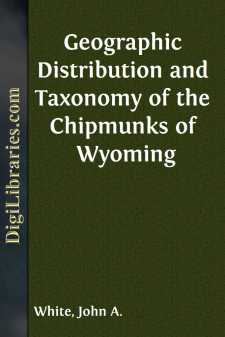Categories
- Antiques & Collectibles 13
- Architecture 36
- Art 48
- Bibles 22
- Biography & Autobiography 813
- Body, Mind & Spirit 142
- Business & Economics 28
- Children's Books 15
- Children's Fiction 12
- Computers 4
- Cooking 94
- Crafts & Hobbies 4
- Drama 346
- Education 46
- Family & Relationships 57
- Fiction 11828
- Games 19
- Gardening 17
- Health & Fitness 34
- History 1377
- House & Home 1
- Humor 147
- Juvenile Fiction 1873
- Juvenile Nonfiction 202
- Language Arts & Disciplines 88
- Law 16
- Literary Collections 686
- Literary Criticism 179
- Mathematics 13
- Medical 41
- Music 40
- Nature 179
- Non-Classifiable 1768
- Performing Arts 7
- Periodicals 1453
- Philosophy 64
- Photography 2
- Poetry 896
- Political Science 203
- Psychology 42
- Reference 154
- Religion 513
- Science 126
- Self-Help 84
- Social Science 81
- Sports & Recreation 34
- Study Aids 3
- Technology & Engineering 59
- Transportation 23
- Travel 463
- True Crime 29
Genera and Subgenera of Chipmunks
by: John A. White
Categories:
Description:
Excerpt
Introduction
The supraspecific categories of the chipmunks, as in most other groups of squirrels, have been a source of controversy for many years. Before presenting new evidence and a review of older evidence bearing on the problem, it seems desirable to review briefly in chronological order, the taxonomic history of the genera and subgenera of the chipmunks.
Linnaeus (1758:64) described the eastern North American chipmunks under the name Sciurus striatus and based his description on that of Catesby (1743:75). The Asiatic chipmunk was first described, under the name Sciurus sibiricus, by Laxmann (1769:69). Schreber (1785, 4:790) separated the Asiatic and North American chipmunks into the Asiatic and American varieties. Gmelin (1788:50) followed Schreber and, employing trinomials, used the names Sciurus striatus asiaticus and S. s. americanus. Illiger (1811:83) proposed Tamias as the generic name of the chipmunk of eastern North America. Say (1823:45) described Sciurus quadrivittatus, the first species of chipmunk known from western North America.
Trouessart (1880:86-87) proposed Eutamias as the subgeneric name to include the western North American and Asiatic chipmunks.
Merriam (1897:189-190) raised Eutamias to full generic rank. In so doing he neither listed nor described any characters but wrote that âit will be observed that the name Eutamias, proposed by Trouessart in 1880 as a subgenus of Tamias is here adopted as a full genus. This is because of the conviction that the superficial resemblance between the two groups is accidental parallelism, in no way indicative of affinity. In fact the two groups, if my notion of their relationship is correct, had different ancestors, Tamias being an offshoot of the ground-squirrels of the subgenus Ictidomys of Allen, and Eutamias of the subgenus Ammospermophilus, Merriam.â
Howell (1929:23) proposed Neotamias as the subgeneric name for the chipmunks of western North America, of the genus Eutamias.
Ellerman (1940, 1:426) gave Eutamias and Neotamias equal subgeneric rank with Tamias under the genus Tamias; on pages 427-428 he quoted Merriam, as I have done above, and later, after quoting the key to the genera and subgenera of chipmunks of Howell (1929:11), Ellerman wrote (op. cit.: 428-429), âThis key convinces me that all these forms must be referred to one genus only. The characters given to separate âEutamiasâ from Tamias are based only on the absence or presence of the functionless premolar, and on the colour pattern. If colour pattern is to be used as a generic character, it seems Citellus suslicus will require a new name when compared with C. citellus, etc.â And again, âThe Asiatic chipmunk is intermediate between typical Tamias and the small American forms in many characters.â To substantiate this, Ellerman (loc. cit.) quotes Howell (loc. cit.), in comparing the subgenera Eutamias and Neotamias, as follows: ââthe ears [of subgenus Eutamias] are broad, rounded, of medium height, much as in Tamias; postorbital broad at base, tapering to a point, much as in Tamias; interorbital constriction slight, as in Tamias; upper molariform tooth rows slightly convergent posteriorly, as in Tamias.ââ Ellerman (loc....





